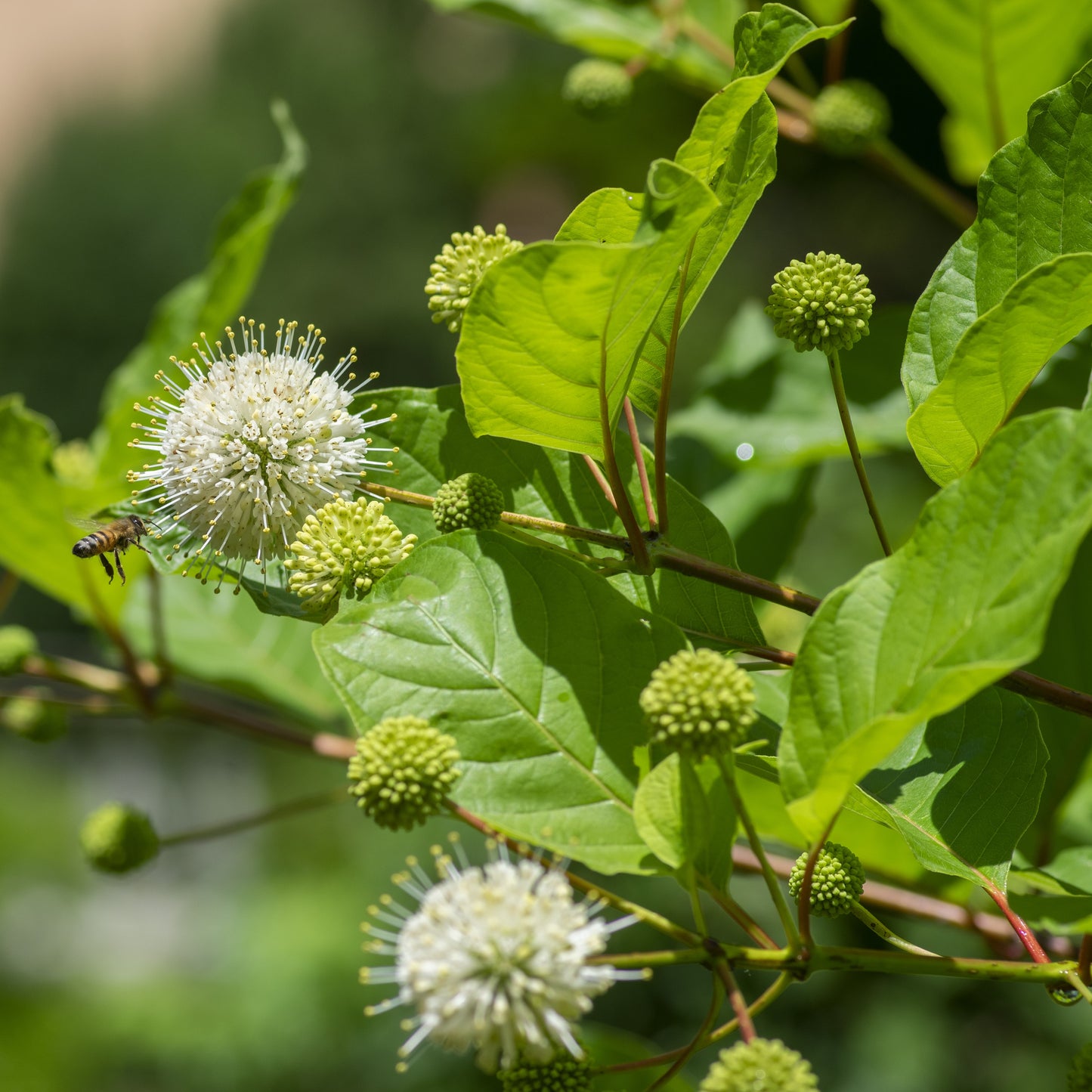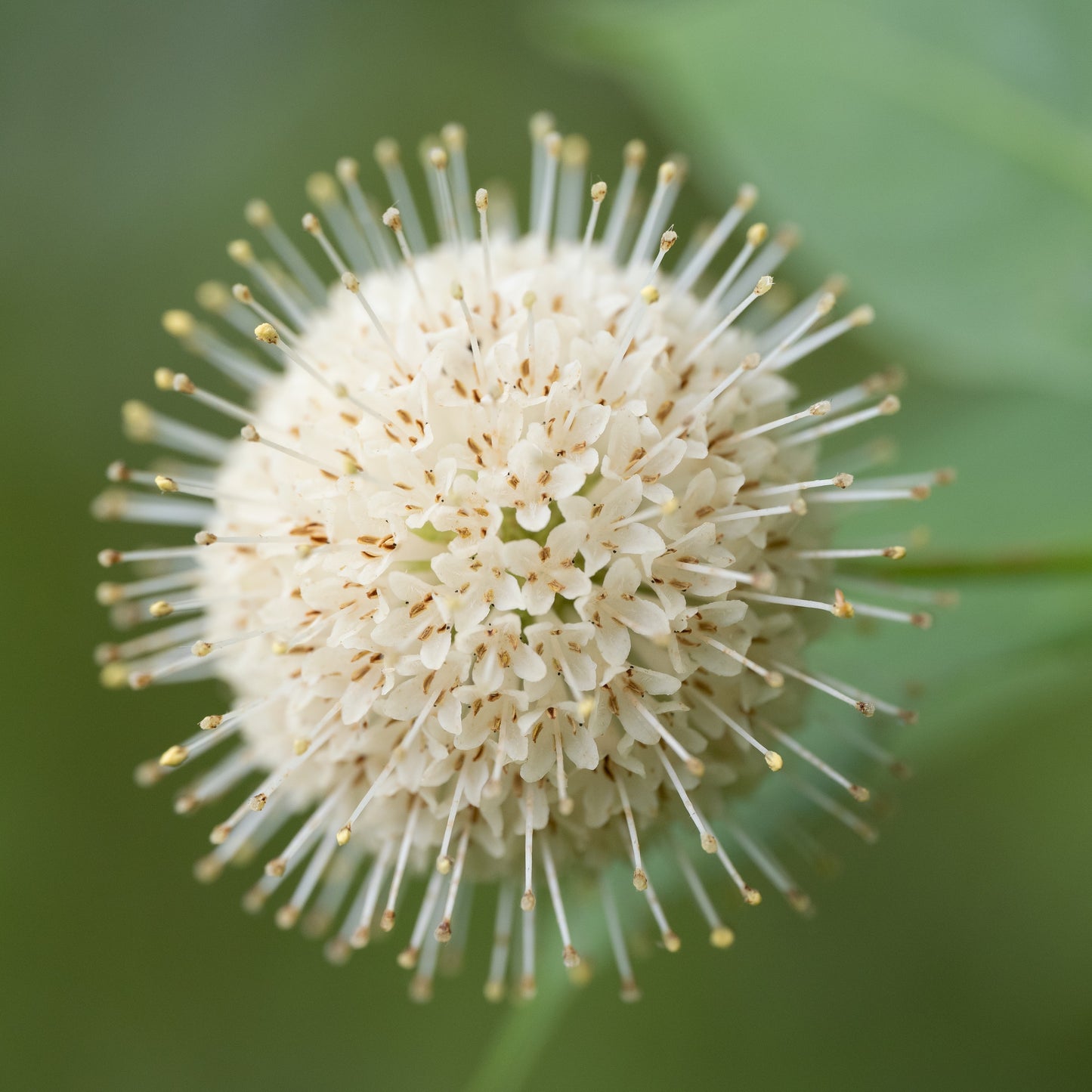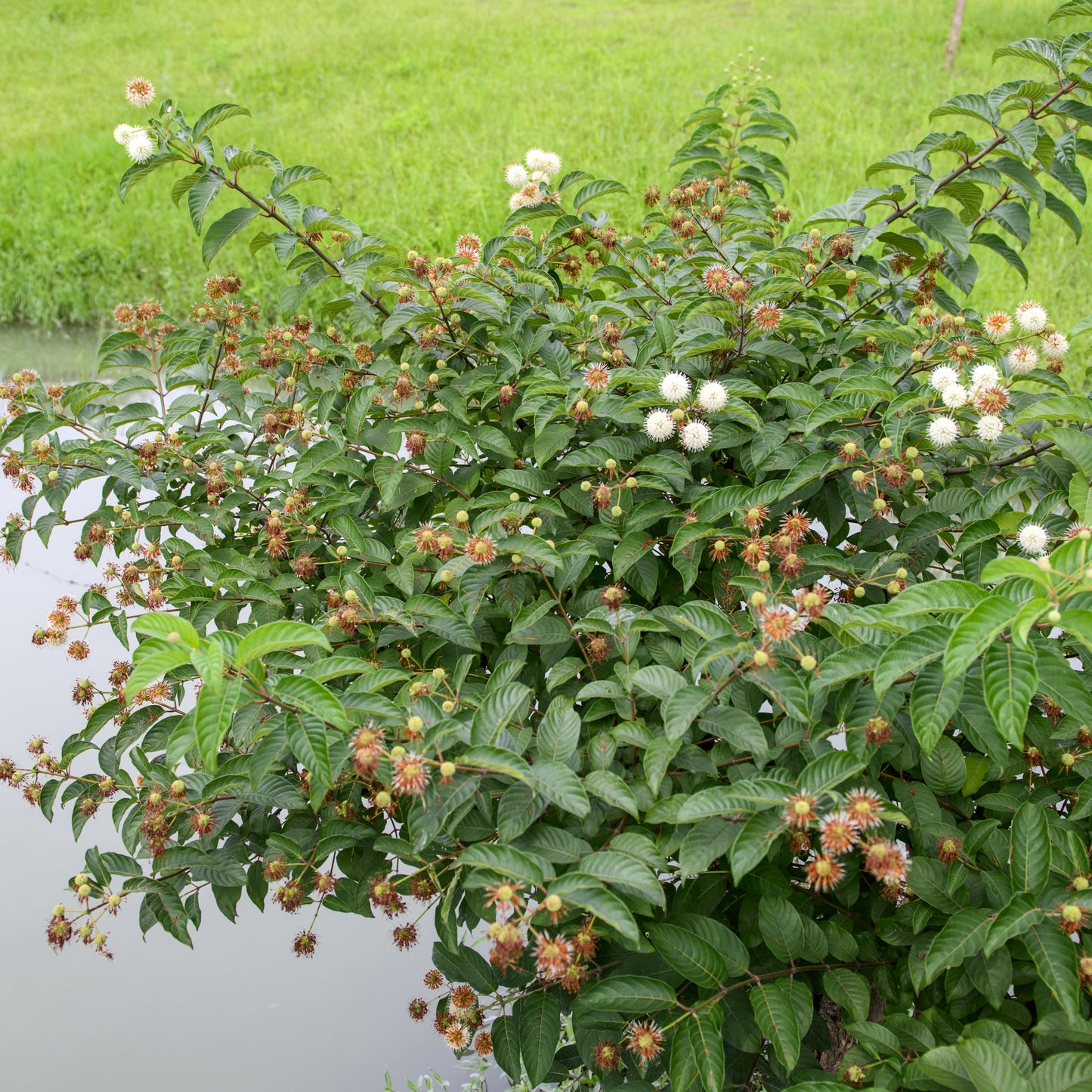Limited Quantities - Reserve Now For Fall
Buttonbush
Buttonbush
Couldn't load pickup availability
The Buttonbush Shrub is a hardy, native wetland shrub known for its unique spherical white flowers, glossy green foliage, and exceptional wildlife benefits. This fast-growing, water-loving shrub thrives in wet soils, making it a perfect choice for rain gardens, pond edges, and wildlife habitats. With its ability to attract pollinators, birds, and beneficial insects, the Buttonbush is an excellent addition to eco-friendly and native landscapes.
Buttonbush Shrub
| Attribute | Details |
|---|---|
| Variety | Rooted |
| Botanical Name | Cephalanthus occidentalis |
| Common Names | Buttonbush, Common Buttonbush, Honey Bells, Button Willow |
| Mature Height | 6-12 feet |
| Mature Width | 4-8 feet |
| Growth Rate | Fast (1-2 feet per year) |
| Lifespan | 50+ years |
| USDA Hardiness Zones | 4-10 |
| Sun Preference | Full sun to partial shade |
| Soil Type | Moist to wet, loamy, sandy, or clay soil |
| Soil pH | Slightly acidic to neutral (5.5-7.5) |
| Water Needs | High; thrives in wet or periodically flooded areas |
| Flowering Season | Summer (June-August) |
| Flower Color | White, fragrant, spherical blooms |
| Fruit | Small, nut-like seed clusters |
| Fall Foliage | Yellow-green |
| Wildlife Attraction | Bees, butterflies, hummingbirds, songbirds, waterfowl |
| Growth Habit | Multi-stemmed, rounded |
| Self-Pollinating? | Yes |
| Landscape Uses | Rain gardens, pond edges, wetland restoration, pollinator gardens, wildlife habitats |
| Maintenance Level | Low |
Environmental Benefits
🌱 Erosion Control & Soil Stabilization – Thrives in wet soils and prevents erosion along pond banks, streams, and wetlands.
🐝 Pollinator & Wildlife Magnet – Produces fragrant, nectar-rich flowers that attract bees, butterflies, and hummingbirds, while birds and waterfowl feed on its seeds.
🌳 Eco-Friendly & Native – Naturally supports local ecosystems and is a vital plant for wetland restoration and conservation projects.
💧 Thrives in Wet Areas – One of the best shrubs for rain gardens, flood-prone areas, and poorly drained soils.
Pros & Cons
| Pros | Cons |
|---|---|
| Fast-growing and easy to establish | Requires consistent moisture and does not tolerate dry soils well |
| Attracts pollinators and beneficial wildlife | Can grow aggressively in wetland environments |
| Unique globe-like flowers provide summer interest | May require occasional pruning to maintain shape |
| Excellent for erosion control in wet areas | Foliage may turn yellow-green in fall instead of bright colors |
| Adaptable to sun and partial shade | Not suitable for dry, drought-prone landscapes |
Planting & Care Guide
🌊 Soak Roots: Soak for 6–12 hours before planting
🌱 Planting Depth: Dig hole 2× wider than roots; plant crown level with soil surface
🌿 Mulch: Apply 2–3 inches to retain moisture and reduce weeds
💧 Watering: Keep consistently moist, especially during first two growing seasons
✂️ Pruning: Shape in late winter or early spring for structure and fullness
🌸 Fertilizer: Not typically needed in rich, moist soils
The Buttonbush Shrub is an outstanding choice for eco-conscious gardeners, wetland restorations, and wildlife-friendly landscapes. Whether used to stabilize pond edges, attract pollinators, or create a natural rain garden, this fast-growing, long-lived shrub provides year-round ecological benefits with minimal maintenance.
Share






